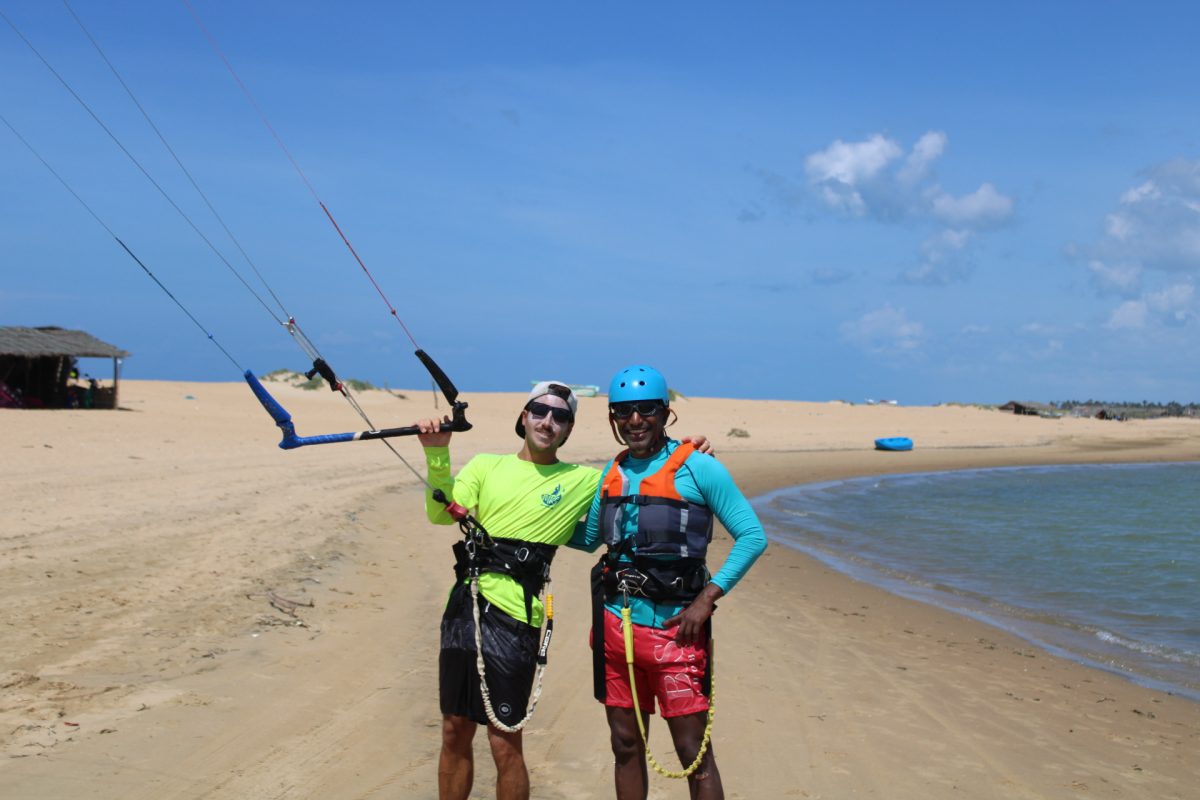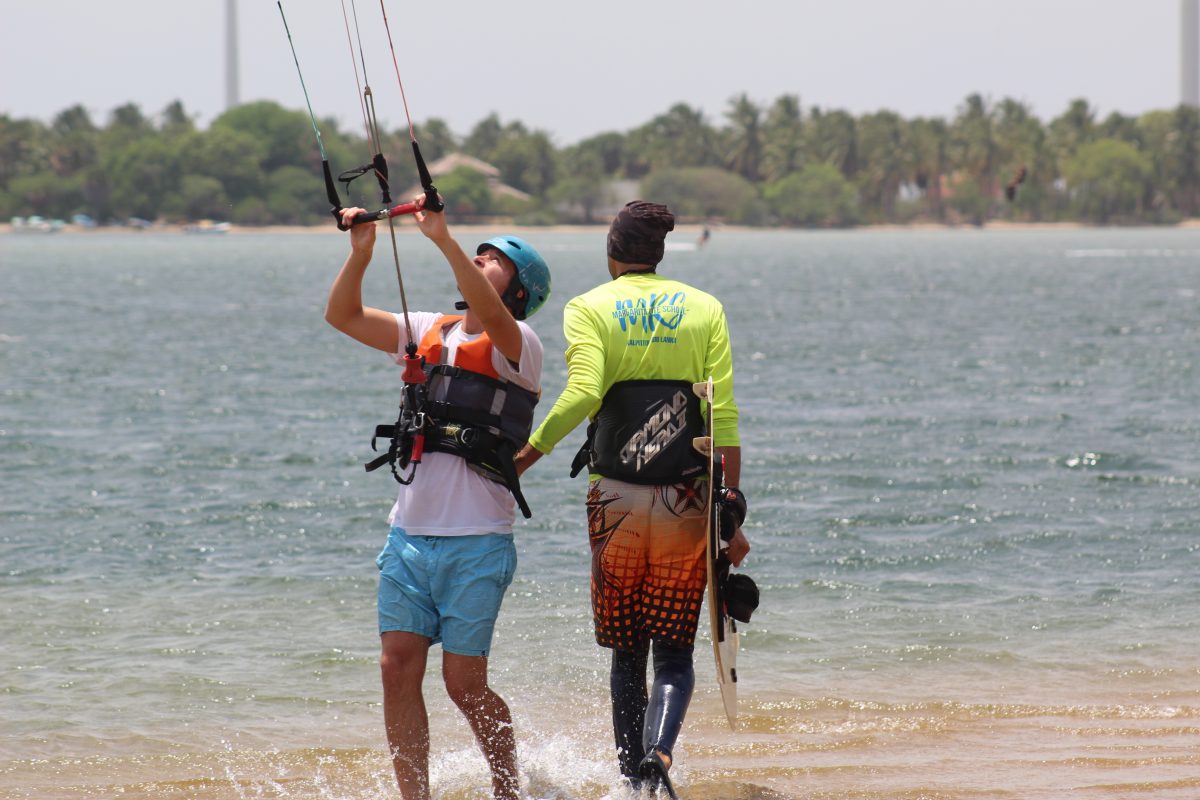Thinking of becoming a kitesurf instructor and wondering what kind of salary to expect? Curious about how much money kitesurfing instructors actually make?
Let’s start with one honest truth: if your goal is to get rich, you might want to look elsewhere.
From a purely financial perspective, working as a kitesurf instructor is not a high-paying job. When you consider the physical demands and the often tough conditions—sun, heat, wind, waves, or strong currents—it’s fair to say it’s one of the lower-paid professions in relation to effort and exposure.
However, if your dream is to turn your passion into your job, then yes—being a kitesurf instructor can be incredibly rewarding.
It’s a deeply fulfilling profession. Seeing the joy on your students’ faces when they get up and ride for the first time is priceless. That moment—when someone rides their first meters thanks to your guidance—is one of the best feelings you can have as an instructor.
Besides doing what we love every day, we also get to kite in our free time, travel the world, and discover new spots. That’s a lifestyle very few jobs can offer. And if you’re lucky enough to combine it with remote work—spending a few hours on the computer and a few hours out on the water—you’ve truly hit the jackpot.
For most of us, kitesurfing is more than just a job—it’s our passion. That’s why you’ll rarely find kitesurf instructors unhappy with their profession.
Now, if you’re seriously considering becoming an instructor, you’re probably wondering: Is it well paid?
The answer depends a lot on where you work. The income of a kitesurf instructor varies significantly depending on the destination.
In general, instructors in North America and Northern Europe tend to earn more than those working in South America or Southern Europe. This usually reflects the pricing of the lessons in each region.

What is the average salary of a kitesurf instructor?
If you’re considering working as a kitesurf instructor and want to know how much you can realistically earn, there are a few key factors that will determine your salary.
Will you be hired as a freelancer or as a full-time staff member? Will accommodation and meals be included?
Your earnings will vary significantly depending on the terms of your contract. For instance, working as a freelancer is very different from being employed on a fixed salary. Some schools provide free accommodation, while others may offer housing but deduct the cost from your paycheck at the end of the month.
Ideally, you want to find a school that offers both decent accommodation and fair pay based on a percentage of the lesson income.
As a general guideline, kitesurf instructors typically earn between 30% and 40% of the price of the courses they teach. On average, instructors can expect to make between €20 and €30 per hour, depending on the destination, the school’s pricing structure, and your experience level.
Keep in mind that some schools also include commissions or bonuses based on student retention or equipment sales, while others may give you additional perks like gear use, insurance, or free meals.
If you’ve found a kitesurf school offering you less than €15 per hour without accommodation included, we strongly recommend you look elsewhere. That kind of pay doesn’t reflect the effort, risk, or qualifications required for the job.
Some schools don’t pay by the hour but instead offer a fixed monthly salary. These salaries typically range from €1,500 to €3,000 per month, depending on the location and the school’s pricing structure. In certain Northern European countries, for example, instructors can earn higher gross salaries—but it’s important to keep in mind that taxes in those regions are also significantly higher, which reduces your net income.
During the high season or in periods of heavy demand, many schools rely on freelance or part-time instructors to help cover extra hours. In these situations, freelance instructors often earn a higher hourly rate. It’s not always guaranteed, but when managed well, freelance instructors can earn up to €50 per hour, especially if they bring their own equipment, have experience, and work with established centers.
Ultimately, the best scenario is to find a balance: a school that respects your work, pays fairly, offers reasonable conditions, and allows you to enjoy the lifestyle that drew you to this profession in the first place.

In high season, it’s common for kitesurf instructors to earn between €1,500 and €2,000 per month, depending on the number of teaching hours and the school’s pricing.
In countries like Norway or Sweden, salaries can reach up to €3,000 per month. However, before jumping at the numbers, keep in mind that high taxes and the cost of living in these regions can significantly reduce your actual earnings. What looks like a great salary on paper might not feel the same once rent, food, and taxes are deducted.
Also, if you’re planning to work in the colder regions, make sure you have a proper wetsuit—because you’ll definitely be spending your hours on the water in some pretty chilly conditions.


